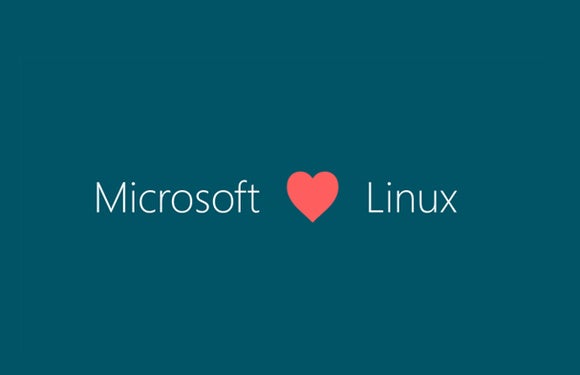Let’s set aside all talk of flying pigs and skating rinks in hell.
Microsoft joining the Linux Foundation as a platinum member was an inevitability, given the company’s ongoing embrace of open source, not an aberration. But such a team-up isn’t an endpoint to Microsoft’s adventures in open source. Consider it the end of the beginning—the last of the first necessary steps Microsoft must take.
Here are four key insights into what this means for Microsoft as an open source company (what a term, right?), in both the short and long term.
1. It isn’t about Linux alone
And neither is the Linux Foundation. A lot of the projects Microsoft has been helping under the Linux Foundation umbrella are infrastructure and developer-oriented projects that Microsoft’s user base is interested in using.
One example is the R Consortium. Back in 2015, Microsoft acquired Revolution Analytics, which provides a widely used commercial implementation of the R statistical programming language. Microsoft was wise enough to recognize that R grows best in the wild, and it chose to preserve the open source underpinnings of the R language and support the R Consortium that promotes the language and its toolset.
Another Linux Foundation project, the Open Container Initiative, is also valuable to Microsoft in a way that simply didn’t exist even a couple of years ago. Microsoft recently reworked the Windows kernel to support Docker-style containers—not to absorb competition, but to avoid being left behind by sea changes in software development methodologies.
For Microsoft to be part of the Linux Foundation means being involved in all these efforts as well. It’s up for grabs how much “involvement” means “influence,” but the same applies to any company of Microsoft’s size that’s a Linux Foundation member (there are more than a few). In Microsoft’s case, criticisms about such topics will matter more than they would for anyone else.
2. Microsoft still has a lot of proprietary software, and it’s going to stay that way
Make no mistake: This move does not constitute a signal that Microsoft is preparing to open-source its key products. The Microsoft Windows kernel, Microsoft SQL Server, crucial parts of the Azure stack, and so on—they are all still strong moneymakers for Microsoft in their current incarnations. You can expect them to remain proprietary for a good long while.
Other platinum-level members of the Linux Foundation are equally committed to their proprietary bits, despite investments they have made in open source. Case in point: Oracle is nobody’s idea of an open source innovator investing in Linux for its own sake. Microsoft followed—and is still mostly in—this mold.
Maybe there’ll come a day where the cloud generates so much revenue for Microsoft it won’t see the need to keep its bits under lock and key. But that day is nowhere in sight—and it’s not worth waiting for when there’s so much else going on in the near term that’s arguably far more important.
3. This helps Microsoft help itself
A common theme in discussions about Microsoft’s involvements with Linux and open source is that it’s been a self-serving effort. Over time, Microsoft has found more places where its best interests coincide nicely with those of others—but again, in a pragmatic and transactional manner.
When Microsoft started contributing to the Linux kernel back in 2008, it was mainly to ensure that Linux ran well under Hyper-V. Altruism and the “spirit of open source” had little to do with the decision. Having Linux run well in more places was a win for Linux, but Microsoft was hoping it would mean a win for Microsoft, too.
Fast-forward to today. Many plans under the scope of the Linux Foundation mesh with Microsoft’s own efforts, directly or indirectly. Microsoft’s project to run Linux software natively on Windows has the chance to bring users to Windows who would have previously scorned it. With support for containers in Windows, an open source ecosystem that was previously confined to Linux is now cross-platform.
Most people won’t complain if this winds up being good for everyone concerned. But first and foremost, watch to see if it’ll be good for Microsoft.
4. There’s still a lot of room for change on Microsoft’s part
Don’t get this wrong, Microsoft joining the Linux Foundation would have been unthinkable even a short time ago. But it is only one of many possible steps that Microsoft could take.
One step Microsoft hasn’t taken: Join the Open Invention Network, a consortium intended to neutralize software-patent-based threats against Linux. InfoWorld’s Andrew Oliver has long been skeptical of Microsoft’s attitudes toward open source. He’d like to see Microsoft walk more like it talks—not only by dropping pending lawsuits involving open source patents and swearing off them in the future.
There are no signs that this is on the books yet, but one can hope that Microsoft joining the Linux Foundation is a prelude.






